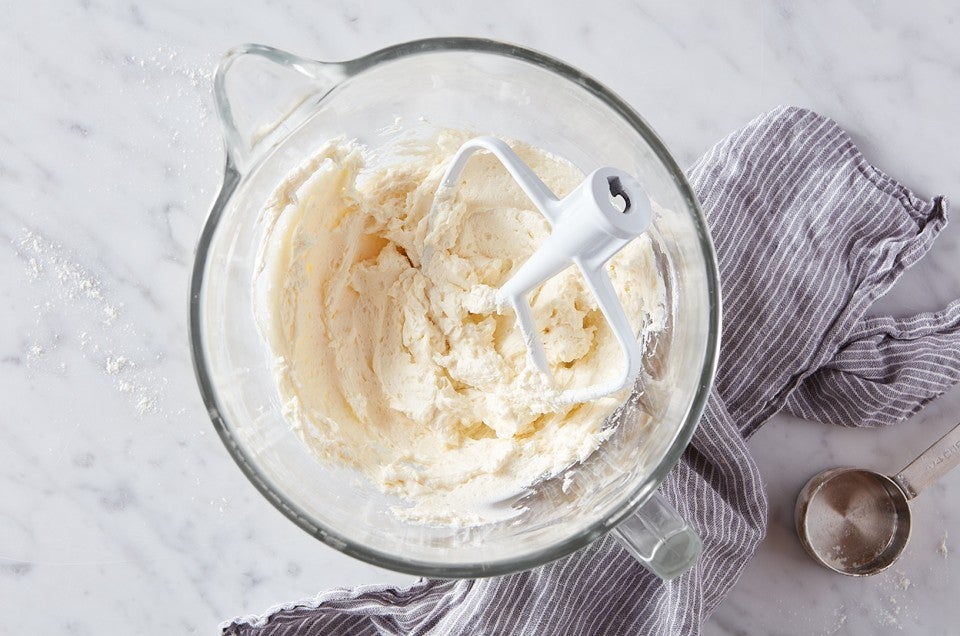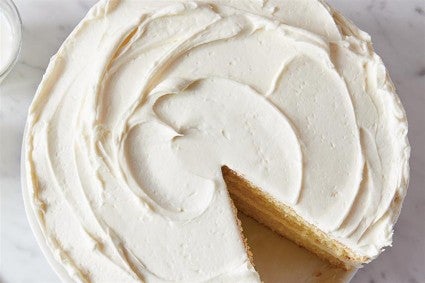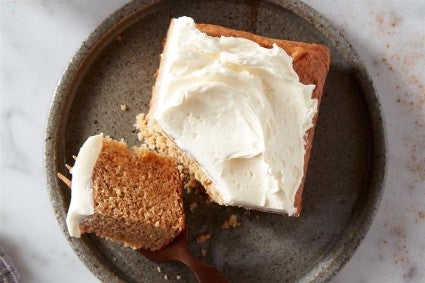A frosting for people who hate frosting
Silky, light, and not-too-sweet, ermine icing is one to know.


Lately, I’ve been seeing preteens wearing the exact same things that were popular when I was in high school 30 years ago, proving the old axiom: Everything old is new again. It’s not just true in fashion, either. Cooks and bakers are always dipping into the archives, finding inspiration in old recipes and techniques. And we predict that one of these recipes, ermine icing, is poised for a comeback.
Also called milk frosting, boiled milk frosting, cooked flour frosting, or roux frosting, ermine icing is made by first cooking together a mixture of flour, milk (or water), and sugar until thick, cooling that mixture, and then beating in butter until it’s light, fluffy, and silky — as silky as an ermine's fur, as the name suggests. Haven’t been petting any wildlife lately? Think buttercream, but even silkier. It first became popular in the late 1800s as the icing of choice for mahogany cake, an early version of red velvet.

Unlike Italian and French buttercreams, which are made with eggs (whites only in the case of Italian, whole eggs in the case of French) and sugar syrup, ermine frosting is egg-free, and it eliminates the fussy step of streaming hot syrup into a running mixer.
It also differs from Swiss buttercream, in which egg whites and sugar are heated together, then whipped with butter, and German buttercream, which starts with a vanilla pastry cream base. And it’s entirely different from American buttercream (aka Quick Buttercream Frosting), that super-sweet, very simple combination of confectioners' sugar and butter. (For a complete run-down of different frostings, check out this blog post: A breakdown of (almost) every frosting.)
Not only is the technique to make ermine icing different, but it also uses far less sugar (and butter) than other types of frosting, so it’s less rich and sweet. In other words, if you’re a person who typically scrapes off frosting in favor of the cake underneath, ermine icing may be the one for you.
Beyond the fact that it’s less sweet than traditional buttercreams, what sets ermine icing apart is its texture. Says Senior Recipe Developer Molly Marzalek-Kelly, who developed the recipe, “I love the light, fluffy, whipped-cream like texture of it. Plus, it’s so much easier to make than its meringue-based buttercream cousins.” The cooked flour base also makes the icing more stable and less prone to melting in warm weather.

With its blowsy texture and restrained sweetness, ermine icing is an especially good choice for richer cakes, such as this Simple and Rich Chocolate Cake or our Golden Vanilla Cake. It was also the original frosting of choice for Red Velvet Cake before Cream Cheese Frosting became de facto, and it’s an easy way to dress up cupcakes. If you’re an amateur at frosting cakes, ermine is a good choice because it spreads easily with an offset spatula, delivering what Molly calls “swoop vibes.” Because of its fluffy texture, it’s not the best choice for intricate piped designs.
Though the ermine icing may be a vintage recipe, what never gets old is a cake (or cupcakes) lavished with fluffy, fuss-free frosting.
And for a truly next-level presentation, frost your cake with ermine icing and finish it with this spectacular Berry Mirror Glaze. Watch our own Kye Ameden show you how:
Cover photography (Ermine Icing) by Rick Holbrook; food styling by Kaitlin Wayne.


